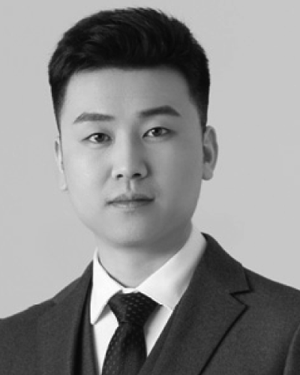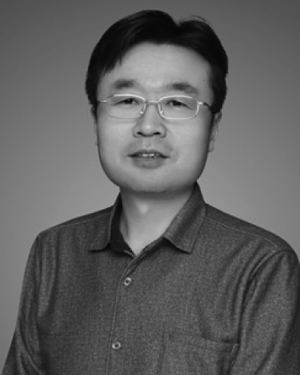Abstract:
Both electromagnetic radiation and heat dissipation are important for mobile terminals. For material selection, radiation seeks high electrical conductivity and is indiff...Show MoreMetadata
Abstract:
Both electromagnetic radiation and heat dissipation are important for mobile terminals. For material selection, radiation seeks high electrical conductivity and is indifferent to thermal conductivity, whereas dissipation is the opposite. Thus, antenna and thermal engineers must compete for territory to achieve good performance in their respective fields. This article firstly proposes the concept of heat-dissipating mobile antenna, highlighting the advantages of achieving extremely small antenna clearances and integrated heat-dissipating function. Different from conventional mobile antennas made up of metal/dielectrics, novel graphene with high electrical conductivity ( 1.1\times 10^{6} S/m) is adopted for antenna design, while its high thermal conductivity also indicates good dissipation capability. Thus, antennas and heat dissipation achieve material/space sharing, significantly expanding the spaces for both. By resorting to the radiative metasurface made of this novel graphene, experimental results show that the frame monopoles at 2.5/3.5 GHz with clearances of 0.2 mm achieve the impedance bandwidths and average efficiencies of 280/540 MHz and −3.6/−2.6 dB, respectively, while the maximum temperatures are reduced by 3.5/2.5° C and 3.1/5.0° C for the heat sources of system-on-chip and camera, respectively, compared to the conventional heat-dissipating design. The proposed concept can simultaneously reduce the demand for antenna clearance and cool down terminals without any compromise.
Published in: IEEE Transactions on Antennas and Propagation ( Volume: 72, Issue: 10, October 2024)
Funding Agency:

Shaanxi Key Laboratory of Deep Space Exploration Intelligent Information Technology, School of Information and Communications Engineering, Xi’an Jiaotong University, Xi’an, China
Meiyan Chen (Student Member, IEEE) received the B.S. degree in communication engineering from Northwest University, Xi’an, China, in 2022. She is currently pursuing the Ph.D. degree in electrical engineering with Xi’an Jiaotong University, Xi’an.
Her current research interests include antenna design and theory, particularly in 5G mobile antennas.
Meiyan Chen (Student Member, IEEE) received the B.S. degree in communication engineering from Northwest University, Xi’an, China, in 2022. She is currently pursuing the Ph.D. degree in electrical engineering with Xi’an Jiaotong University, Xi’an.
Her current research interests include antenna design and theory, particularly in 5G mobile antennas.View more

Shaanxi Key Laboratory of Deep Space Exploration Intelligent Information Technology, School of Information and Communications Engineering, Xi’an Jiaotong University, Xi’an, China
Le Chang (Senior Member, IEEE) received the B.S. degree in electronics and information engineering from Xidian University, Xi’an, China, in 2012, and the Ph.D. degree in electrical engineering from Tsinghua University, Beijing, China, in 2017.
In July 2017, he joined Huawei Technology Ltd., Beijing, as a Senior Antenna Engineer. Since 2021, he has been with Xi’an Jiaotong University, where he is currently an Associate Prof...Show More
Le Chang (Senior Member, IEEE) received the B.S. degree in electronics and information engineering from Xidian University, Xi’an, China, in 2012, and the Ph.D. degree in electrical engineering from Tsinghua University, Beijing, China, in 2017.
In July 2017, he joined Huawei Technology Ltd., Beijing, as a Senior Antenna Engineer. Since 2021, he has been with Xi’an Jiaotong University, where he is currently an Associate Prof...View more

Shaanxi Key Laboratory of Deep Space Exploration Intelligent Information Technology, School of Information and Communications Engineering, Xi’an Jiaotong University, Xi’an, China
Anxue Zhang received the B.S. degree in electrical engineering from Henan Normal University, Henan, China, in 1996, and the M.S. and Ph.D. degrees in electrical engineering from Xi’an Jiaotong University, Xi’an, China, in 1999 and 2003, respectively.
He is currently a Professor and the Director of the Institute of Electromagnetics and Information Technology of Xi’an Jiaotong University. He is also a member of the Academic ...Show More
Anxue Zhang received the B.S. degree in electrical engineering from Henan Normal University, Henan, China, in 1996, and the M.S. and Ph.D. degrees in electrical engineering from Xi’an Jiaotong University, Xi’an, China, in 1999 and 2003, respectively.
He is currently a Professor and the Director of the Institute of Electromagnetics and Information Technology of Xi’an Jiaotong University. He is also a member of the Academic ...View more

Shaanxi Key Laboratory of Deep Space Exploration Intelligent Information Technology, School of Information and Communications Engineering, Xi’an Jiaotong University, Xi’an, China
Meiyan Chen (Student Member, IEEE) received the B.S. degree in communication engineering from Northwest University, Xi’an, China, in 2022. She is currently pursuing the Ph.D. degree in electrical engineering with Xi’an Jiaotong University, Xi’an.
Her current research interests include antenna design and theory, particularly in 5G mobile antennas.
Meiyan Chen (Student Member, IEEE) received the B.S. degree in communication engineering from Northwest University, Xi’an, China, in 2022. She is currently pursuing the Ph.D. degree in electrical engineering with Xi’an Jiaotong University, Xi’an.
Her current research interests include antenna design and theory, particularly in 5G mobile antennas.View more

Shaanxi Key Laboratory of Deep Space Exploration Intelligent Information Technology, School of Information and Communications Engineering, Xi’an Jiaotong University, Xi’an, China
Le Chang (Senior Member, IEEE) received the B.S. degree in electronics and information engineering from Xidian University, Xi’an, China, in 2012, and the Ph.D. degree in electrical engineering from Tsinghua University, Beijing, China, in 2017.
In July 2017, he joined Huawei Technology Ltd., Beijing, as a Senior Antenna Engineer. Since 2021, he has been with Xi’an Jiaotong University, where he is currently an Associate Professor. He has authored or co-authored over 34 journal articles. His current research interests include mobile antennas and mmW/THz antennas.
Le Chang (Senior Member, IEEE) received the B.S. degree in electronics and information engineering from Xidian University, Xi’an, China, in 2012, and the Ph.D. degree in electrical engineering from Tsinghua University, Beijing, China, in 2017.
In July 2017, he joined Huawei Technology Ltd., Beijing, as a Senior Antenna Engineer. Since 2021, he has been with Xi’an Jiaotong University, where he is currently an Associate Professor. He has authored or co-authored over 34 journal articles. His current research interests include mobile antennas and mmW/THz antennas.View more

Shaanxi Key Laboratory of Deep Space Exploration Intelligent Information Technology, School of Information and Communications Engineering, Xi’an Jiaotong University, Xi’an, China
Anxue Zhang received the B.S. degree in electrical engineering from Henan Normal University, Henan, China, in 1996, and the M.S. and Ph.D. degrees in electrical engineering from Xi’an Jiaotong University, Xi’an, China, in 1999 and 2003, respectively.
He is currently a Professor and the Director of the Institute of Electromagnetics and Information Technology of Xi’an Jiaotong University. He is also a member of the Academic Committee of the Key Laboratory of Ultrahigh Speed Circuit Design and Electromagnetic Compatibility of the Ministry of Education. His research areas include antenna and electromagnetic wave propagation, RF and microwave circuit design, and metamaterials. He has co-authored one book and more than 300 journal articles on these topics.
Anxue Zhang received the B.S. degree in electrical engineering from Henan Normal University, Henan, China, in 1996, and the M.S. and Ph.D. degrees in electrical engineering from Xi’an Jiaotong University, Xi’an, China, in 1999 and 2003, respectively.
He is currently a Professor and the Director of the Institute of Electromagnetics and Information Technology of Xi’an Jiaotong University. He is also a member of the Academic Committee of the Key Laboratory of Ultrahigh Speed Circuit Design and Electromagnetic Compatibility of the Ministry of Education. His research areas include antenna and electromagnetic wave propagation, RF and microwave circuit design, and metamaterials. He has co-authored one book and more than 300 journal articles on these topics.View more


